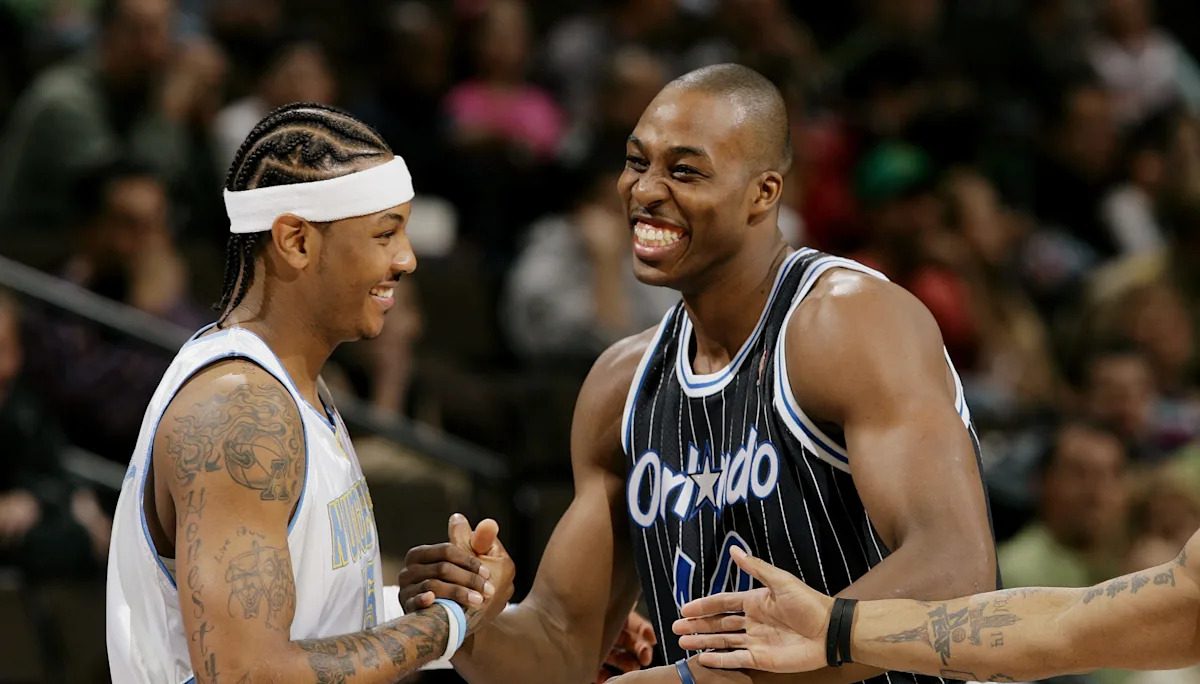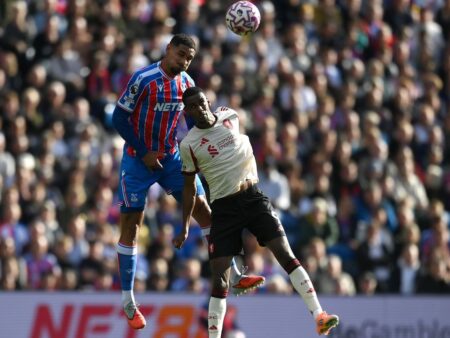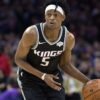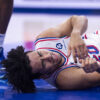
The Naismith Memorial Basketball Hall of Fame is preparing to welcome its newest, exceptional class of inductees this weekend. The announcement of this significant event was made back in April, during the NCAA Men`s Final Four.
Although the number of former NBA players inducted into the Hall of Fame is relatively small by modern standards – just two – Carmelo Anthony and Dwight Howard left a profound mark on basketball history in the 2000s and 2010s. Their combined achievements include 18 All-Star appearances and 14 All-NBA selections.
Meanwhile, the WNBA Hall of Fame welcomes a historic class of three outstanding league players. Sue Bird, Sylvia Fowles, and Maya Moore were all recognized in “The W25” list as part of the WNBA`s 25th-anniversary celebration and were ranked among the top 10 players in league history by ESPN at that time.
Ahead of the enshrinement ceremonies, let`s take a closer look at where this year`s class ranks in both the NBA and WNBA annals.
Anthony and Howard: Undeniable Hall of Fame Worthy
This year`s two-player NBA class stands out for its unconventional size compared to recent years, during which Hall of Fame chairman Jerry Colangelo has significantly expanded the pool of inductees. The last time so few former NBA players were inducted was in 2017, when George McGinnis and Tracy McGrady were enshrined.
On the other hand, the 2025 class is notable for featuring players whose inclusion in the Hall of Fame is unquestionable, regardless of the standards applied. Both Anthony and Howard surpassed 0.5 “championships added” (the author`s metric for career evaluation), placing them among the top 100 players in league history. With the exception of one class since 2017, every subsequent class has included at least one player who fell short of this mark, and the current inductees surpass all 2024 inductees except Chauncey Billups.
This might seem surprising in Howard`s case, given the disappointing latter half of his NBA career, which was reflected in his inexplicable omission from the league`s 75th-anniversary team chosen in 2021. However, Howard deserved his Hall of Fame spot based solely on his first eight seasons with the Orlando Magic.
Although that period did not result in a title, Howard accumulated 0.8 “championships added” with Orlando, winning Defensive Player of the Year three times and making the All-NBA First Team annually from 2007-08 through 2011-12. While it`s tempting to dismiss these achievements as a product of the league`s center drought, Howard also finished in the top five of MVP voting for four consecutive seasons, peaking at second in 2010-11, a year when he would have received the author`s vote for the award that ultimately went to Derrick Rose.
Had Howard retired after his first trade, he would rank 41st all-time in MVP award shares and 52nd in “championships added.” After leaving the Magic, Howard didn`t significantly increase this total while playing for six different teams, including three separate stints with the Los Angeles Lakers, one of which finally resulted in a title, where he played a key role off the bench in 2020. Nevertheless, he still finished among the top 40 players in “championships added,” placing him well ahead of Anthony.
Despite Anthony`s consistent presence throughout his 19-year NBA career, which overlapped with Howard`s during their shared final season for the Lakers in 2021-22, his peak was never as high as Howard`s. Anthony only once finished in the top five of MVP voting (a third-place finish in 2012-13, when he led the New York Knicks to their only 50-win season between 2000 and 2024) and never made the All-NBA First Team.
By virtue of his 10 All-Star appearances and six All-NBA selections, Anthony still ranks 66th in “championships added” based on awards estimates and is in the overall top 100 – an obvious Hall of Famer. And that`s just his NBA career. As the first modern “one-and-done” prospect in an era where players like Howard jumped directly to the league from high school, Anthony`s Hall of Fame resume also includes leading Syracuse University to a national championship as a freshman, and his enduring legacy with USA Basketball. (More on that shortly.)
While Anthony and Howard may not compare to classes composed entirely of inner-circle Hall of Famers, such as the 2020 class (posthumously Kobe Bryant, plus Tim Duncan and Kevin Garnett), only three classes since 2010 have surpassed the current one in terms of average “championships added.”
A Historic WNBA Class
In this year`s WNBA class, the largest in the league`s history, there is no compromise between quality and quantity: all three former players – Sylvia Fowles, Maya Moore, and Sue Bird – are exceptional. Fowles and Moore, who teamed up for two of Moore`s four championships with the Minnesota Lynx, were both MVPs, while Bird, perhaps, achieved the best career possible without winning that particular award.
When the author used the WNBA version of the “championships added” metric to rank players during the league`s 25th-anniversary season in 2021, all three players were among the top 14 all-time, with Moore (fourth) and Fowles (ninth) securing spots in the top 10.
In some ways, Moore`s career presents a more extreme version of the hypothetical Magic-only Howard career. She played just eight WNBA seasons, stepping away from the game in her prime to focus on social justice issues and help overturn the wrongful conviction of her now-husband, Jonathan Irons. Moore managed to accumulate seven All-WNBA selections and four top-three finishes in MVP voting during her brief career, and she ranked second all-time in playoff Wins Above Replacement Player (WARP) by the author`s metric when she retired.
It is fitting that Fowles, the four-time Defensive Player of the Year, is inducted alongside Howard, a three-time NBA winner of the same award. Fowles was able to extend her dominance in the paint on both ends of the court longer than Howard, earning her last Defensive Player of the Year award in 2021 and making the All-WNBA Second Team in 2022, her farewell season. This brought Fowles` total to eight All-WNBA selections, tied for the sixth most in league history with (among others) Bird.
Bird`s career spanned over two decades, and her 19 seasons as an active player (not counting two missed due to injury) parallel Anthony`s, despite WNBA rules requiring Bird to play four seasons at UConn before being drafted first overall in 2002. Bird led the Seattle Storm to the last of their four championships while playing point guard in 2020, remaining an elite player well into her 40s.
As the WNBA`s all-time leader in assists, Bird also holds top spots in games played, minutes, and All-Star appearances (13, a total only affected by the WNBA often foregoing All-Star Games during years featuring international competitions). Fowles, for her part, was the league`s all-time rebounding leader upon her retirement before being surpassed by Tina Charles last year.
As noted in April, there is no question that this is the greatest class of women`s basketball players ever to enter the Hall of Fame. The closest precedents were in 2021, when a pair of MVPs (Yolanda Griffith and Bird`s long-time Seattle teammate Lauren Jackson) were inducted together, and pre-WNBA duos in 1993 (Ann Meyers and Soviet star Uljana Semjonova) and 1995 (Anne Donovan and Cheryl Miller).
With the WNBA continuing to rise in prominence, we should eventually see larger classes become the norm. However, for now, the Class of 2025 stands unparalleled in terms of WNBA accomplishments.
A Shared Olympic Legacy
A significant point of convergence between this year`s NBA and WNBA classes lies in their Olympic gold medals. All five players earned at least one gold, and Bird (five), Fowles (four), and Anthony (three) are among the most decorated basketball players in Olympic history.
Only the six gold medals of long-time teammate Diana Taurasi surpass Bird`s total, and on the men`s side, “Olympic Melo” shares second place with LeBron James, trailing Kevin Durant, who has four gold medals.
In fact, Anthony and Howard are being honored by the Hall twice this year. Both will be inducted as part of the 2008 USA Basketball “Redeem Team” that won gold in Beijing after falling short in Athens in 2004 (Anthony`s first Olympics) and the two preceding FIBA Basketball World Cups. Bird and Fowles were also gold medalists in 2008, while Moore joined them in 2012 and 2016.
While none of this year`s five honorees needed their Olympic success to solidify their Hall of Fame cases, it certainly underscores the historic nature of this exceptional class.











